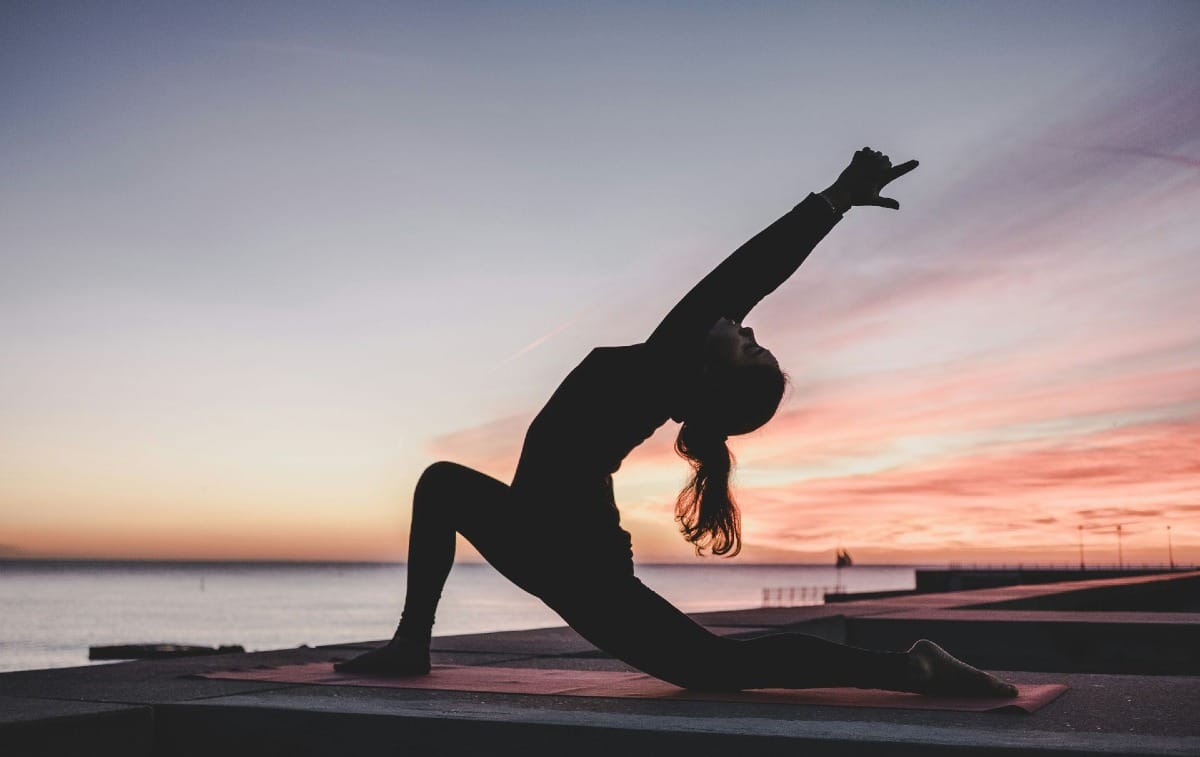Research suggests that practicing yoga may offer numerous health benefits and potentially contribute to longevity, with studies indicating improvements in flexibility, stress reduction, balance, and overall well-being. While more research is needed to fully understand yoga's long-term effects, emerging evidence points to its potential as a holistic approach to promoting physical and mental health as we age.
Yoga's Impact on Stress Reduction and Cortisol Levels
Yoga has been shown to have a significant impact on stress reduction and cortisol levels, offering a promising approach to managing stress-related health issues. Cortisol, often referred to as the "stress hormone," plays a crucial role in the body's stress response and is frequently elevated in individuals experiencing chronic stress.
Multiple studies have demonstrated that yoga practice can lead to a decrease in cortisol levels. In a study conducted at Thomas Jefferson Medical College, new yoga practitioners participated in daily 50-minute yoga classes for a week. The researchers observed a significant decrease in cortisol levels after each yoga class, with a remarkably high probability (99.9%) of replicating these results in future studies[2].
The mechanisms behind yoga's stress-reducing effects are multifaceted. Yoga is known to enhance parasympathetic (vagal) tone, which can lead to reduced firing of the locus ceruleus and decreased norepinephrine output. This results in relaxation, reduced respiratory and heart rates, and potentially decreased cortisol production[1]. Additionally, yoga may activate the prefrontal cortex and enhance glutamate transmission in the hypothalamus, leading to the release of beta-endorphins, which can further reduce anxiety and cortisol levels[1].
A meta-analysis of randomized controlled trials found that yoga practices, with or without mindfulness-based stress reduction, had significant effects on stress-related physiological measures, including blood pressure, heart rate, and cortisol levels[3]. This suggests that yoga can be an effective intervention for managing stress and its physiological manifestations.
Interestingly, yoga's impact on cortisol levels appears to be beneficial regardless of whether levels are initially high or low. Research indicates that yoga practice can help normalize cortisol levels, bringing them into balance whether they were previously elevated or depressed[2]. This balancing effect could be particularly valuable for individuals with conditions characterized by abnormal cortisol levels, such as depression, type 2 diabetes, and hypertension[2].
The stress-reducing benefits of yoga extend beyond cortisol regulation. A cross-sectional study examining the association between yoga practice and periodontal disease found that individuals who practiced yoga regularly had lower serum cortisol levels and better periodontal health compared to those with stress and periodontitis[4]. This suggests that yoga's stress-reducing effects may have far-reaching implications for overall health.
It's important to note that the stress-reducing effects of yoga are not solely attributable to physical postures. The combination of controlled breathing (pranayama) and conscious movement appears to be crucial in balancing the autonomic nervous system and reducing stress[5]. Deep, slow breathing during yoga practice can increase parasympathetic nervous system activity, promoting a sense of calm and well-being[5].
While more research is needed to fully understand the long-term effects of yoga on stress and cortisol levels, the existing evidence strongly supports its potential as a valuable tool for stress management and overall health improvement.
Improved Flexibility and Balance in Older Adults
Yoga offers significant benefits for improving flexibility and balance in older adults, which are crucial for maintaining mobility and reducing the risk of falls. Regular yoga practice can help seniors enhance their range of motion, strengthen muscles, and develop better body awareness.
Improved flexibility is one of the primary benefits of yoga for older adults. As we age, our muscles and joints naturally become stiffer, but yoga can help counteract this process. Gentle stretching exercises in yoga work to elongate and soften muscles, making them more flexible and allowing for easier movement[1]. One study showed that women over 50 experienced improved spine flexibility after practicing yoga just once a week for five months[4].
Balance is another key area where yoga can benefit seniors. Falls are a significant health concern for older adults, with the Centers for Disease Control and Prevention reporting that three million older people visit the emergency room due to fall-related injuries each year[4]. Yoga can help address this issue by improving balance and stability. The slow, measured movements in yoga practice can lead to better balance and build confidence in one's ability to move without falling[4].
Yoga poses that emphasize standing tall and maintaining balance not only build physical strength but also enhance proprioception - the body's ability to sense its position in space[4]. This improved body awareness can translate to better stability and coordination in daily activities, reducing the risk of falls and injuries.
The benefits of yoga for flexibility and balance in older adults are supported by scientific research. A study published in The Journals of Gerontology demonstrated that yoga is as effective as other stretching and strengthening exercises in improving functional fitness in seniors[4]. Another study found that yoga practice can significantly improve balance, flexibility, and mobility in older adults, even when practiced just twice weekly[2].
It's important to note that yoga can be adapted to suit the needs and abilities of older practitioners. Chair yoga, for instance, offers a safe and effective way for seniors with limited mobility to enjoy the benefits of yoga[2]. Many yoga poses can be modified using props like blocks, straps, or chairs to make them more accessible while still providing the benefits of improved flexibility and balance[5].
By incorporating yoga into their routine, older adults can experience improved posture, increased range of motion in joints, and enhanced overall mobility. These improvements can contribute significantly to maintaining independence and quality of life as one ages[3]. As with any new exercise regimen, seniors should consult with their healthcare provider before starting yoga and should always listen to their bodies, modifying poses as needed to ensure safety and comfort[5].
Yoga for Chronic Lower Back Pain Management
Yoga has emerged as a promising non-pharmacological intervention for managing chronic lower back pain (CLBP), with multiple studies demonstrating its effectiveness in reducing pain and improving function. CLBP, defined as pain lasting for 3 months or more, is a prevalent and often debilitating condition that affects millions worldwide[1].
Several systematic reviews and meta-analyses have evaluated the efficacy of yoga for CLBP. A Cochrane review including 21 trials with 2223 participants found that yoga probably improves back-related function and pain compared to not exercising, although the improvements were small[4]. The review also noted that there was likely little to no difference between yoga and other back-focused exercises in improving back-related function[4].
The mechanisms by which yoga may alleviate CLBP are multifaceted. Yoga combines physical postures, breathing exercises, and meditation, which can collectively address both the physical and psychological aspects of chronic pain[1]. The practice can improve flexibility, strength, and body awareness, potentially correcting postural imbalances that contribute to back pain[3].
A meta-analysis of randomized controlled trials found that 12 weeks of yoga intervention significantly lowered levels of chronic non-specific lower back pain[3]. This suggests that a consistent yoga practice over several months may be beneficial for pain management. However, it's important to note that the optimal frequency and duration of yoga practice for CLBP management may vary among individuals.
One study compared yoga therapy to conventional exercise therapy for CLBP, with a 6-month follow-up[1]. The results indicated that yoga can reduce pain and disability, can be practiced safely, and is well-received by participants. Some studies also suggest that yoga may improve psychological symptoms associated with chronic pain, although these effects are not as well established[1].
Safety is a crucial consideration when recommending yoga for CLBP. While yoga is generally considered safe, the Cochrane review reported that back pain was the most common adverse event in yoga trials[4]. The risk of adverse events was higher with yoga compared to no exercise, but similar to other types of exercise[4]. This underscores the importance of proper instruction and modification of poses to suit individual needs and limitations.
It's worth noting that the effectiveness of yoga for CLBP may be influenced by various factors, including the specific type of yoga practiced, the instructor's expertise, and the individual's adherence to the practice. A randomized dosing trial compared once versus twice-weekly yoga classes for CLBP in predominantly low-income, racially diverse populations[1]. Interestingly, the study found no significant difference in outcomes between the once and twice-weekly groups, suggesting that even a weekly yoga practice may be beneficial[1].
While the evidence generally supports yoga as a beneficial intervention for CLBP, some limitations in the existing research should be acknowledged. Many studies have small sample sizes, lack long-term follow-up, or have methodological limitations such as the inability to blind participants[1][4]. Additionally, the heterogeneity in yoga styles and protocols across studies makes it challenging to determine the most effective approach.
In conclusion, current evidence suggests that yoga can be an effective complementary approach for managing chronic lower back pain, offering improvements in pain levels and functional ability. However, as with any intervention, it should be practiced under proper guidance, and individuals with CLBP should consult healthcare providers before starting a yoga program to ensure it's appropriate for their specific condition.














Member discussion